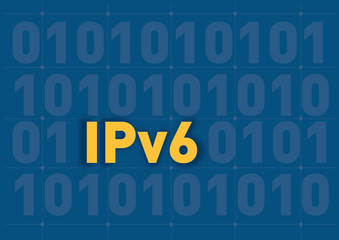IPv6 link-local addresses play a pivotal role in the realm of network communication, enabling devices on the same local network to communicate from the get-go, even before broader network connectivity is established.
Unlike IPv4, which may use Automatic Private IP Addressing (APIPA) when DHCP is unavailable, IPv6 employs these special addresses for immediate, local communication.
Automatically assigned to every interface of an IPv6-enabled device, link-local addresses are crucial for executing essential tasks like the Neighbor Discovery protocol, which includes actions such as verifying the uniqueness of addresses (Duplicate Address Detection) and router discovery (Router Solicitation).
The core value of link-local addresses lies in their automatic functionality, ensuring devices can connect and communicate within their local network segment without relying on a central IP address management system like DHCP. This autonomous capability is critical during initial device network setup or when devices attempt to connect to local network infrastructure, such as routers and switches.
Importance of IPv6 Link-Local Addresses
IPv6 link-local addresses serve as the foundation for devices to communicate within a local network, playing a crucial role in the initial network setup and ongoing communication. These addresses are automatically assigned to each interface on an IPv6-enabled device, ensuring that devices can connect and interact with each other without needing a centrally managed IP assignment system like DHCP. This automatic operation is fundamental, particularly during the initial network configuration phase or when devices seek to establish connections within their local network infrastructure.
Essential for Local Network Operations
The primary utility of IPv6 link-local addresses lies in their essential role in local network operations. Every IPv6-capable device relies on these addresses for local communication tasks, which include crucial processes such as Neighbor Discovery. This protocol facilitates vital networking tasks, including ensuring the uniqueness of the network addresses and discovering routers, which are imperative for the device to participate effectively in the network.
Facilitates Initial Device Communication
Before a device can communicate over larger networks, it must first establish its presence on the local network. IPv6 link-local addresses enable this initial communication, allowing devices to discover each other and essential network services like routers. This capability is especially important in environments where a DHCP server is not available to assign global unicast addresses.
Enables Router Discovery and Configuration
An important aspect of link-local addresses is their role in router discovery and configuration. Devices use their link-local addresses to send out Router Solicitation messages as part of the Neighbor Discovery protocol. In response, routers send Router Advertisement messages, also sourced from their link-local addresses, informing devices of network configuration parameters and the presence of routers. This interaction is key to establishing a default gateway and configuring devices for broader network access.
Supports Seamless Network Integration
The automatic assignment and functionality of link-local addresses ensure that devices can integrate into the network seamlessly and without manual configuration. This not only simplifies the process of adding new devices to the network but also ensures that they can start communicating with other local devices and routers immediately, facilitating a robust and efficient networking environment.
IPv6 link-local addresses are not just technical requirements; they are the backbone of local network communication, enabling devices to discover and interact with each other and the network infrastructure. Their role in facilitating essential network protocols and operations underscores their importance in the seamless functioning of IPv6 networks.
By understanding the significance and functionality of IPv6 link-local addresses, IT professionals and network enthusiasts can appreciate the robust framework they provide for efficient network communication and configuration, ensuring seamless network integration and operation.

How IPv6 Link-Local Addresses Work
Understanding IPv6 link-local addresses is key to mastering network operations. These addresses are automatically generated for every IPv6-enabled device interface, making initial communication on a local network simple and efficient. This process ensures devices can talk to each other and important network equipment like routers without a pre-configured IP address or the aid of a DHCP server.
Automatic Configuration Process
One of the standout features of IPv6 link-local addresses is their self-configuration capability. Each device automatically assigns itself a link-local address upon joining a network. This process involves the device appending its interface identifier to the well-known link-local prefix FE80::/10, resulting in a unique IPv6 address that can be used for communication on the local link.
Unique Address Guarantee
To ensure that each link-local address is truly unique, IPv6 devices perform a process called Duplicate Address Detection (DAD). This process involves the device sending a special packet on the network to check if any other device is using the same link-local address. If no response is received, the address is considered unique, and the device proceeds to use it for local network communication.
Critical for Neighbor Discovery Protocol
Link-local addresses are the cornerstone of the Neighbor Discovery Protocol (NDP), a key component of IPv6 that replaces several IPv4 protocols like ARP, ICMP Router Discovery, and ICMP Redirect. NDP uses link-local addresses to discover other devices on the network, determine their reachability, and identify duplicate addresses, which are essential for efficient network operation.
Enabling Router Discovery and Communication
Devices use their link-local addresses to communicate directly with routers on the local network. Through NDP, a device sends a Router Solicitation message using its link-local address, to which routers respond with a Router Advertisement message. This exchange informs the device of available routers and their addresses, enabling it to configure itself for broader network access.
For those looking to deepen their understanding of networking concepts and IPv6, our Cisco CCNA course offers comprehensive insights and practical knowledge
Practical Application in Networking
The use of link-local addresses streamlines network setup and maintenance, allowing devices to communicate without complex configuration. This is particularly useful in environments where a device needs to obtain network parameters automatically or when setting up initial communications in a new network installation.

Technical Aspects and Challenges of IPv6 Link-Local Addresses
Delving into IPv6 link-local addresses reveals a landscape filled with both ingenious solutions and intriguing challenges. These addresses, essential for local network operations, come with unique technical features and hurdles that are vital for network engineers and IT professionals to understand.
Interface Identifier (IID) Derivation
A pivotal aspect of link-local addresses is the Interface Identifier (IID), which ensures the uniqueness of an address on a local network. The IID is typically derived using methods like EUI-64, privacy extensions, or stable-SLAAC. The EUI-64 format, for instance, modifies the device's MAC address to create a unique 64-bit identifier. However, this method raised privacy concerns because it could potentially allow tracking of devices across different networks. To address these concerns, newer methods like privacy extensions have been introduced, which generate temporary, random IIDs to enhance user privacy.
Scoped Addressing and Zone Identifiers
Another key feature of link-local addresses is their scoped nature, meaning they are only valid within a specific network segment or scope. This characteristic introduces the concept of zone identifiers, which are necessary when specifying link-local addresses in certain contexts, such as network configurations or application settings. The zone identifier, often indicated by a percent sign (%), clarifies the intended scope of the address, ensuring accurate communication in systems with multiple network interfaces.
Duplicate Address Detection (DAD) Challenges
While Duplicate Address Detection (DAD) is crucial for ensuring the uniqueness of link-local addresses, it also presents challenges. The process can introduce delays in network interface initialization, especially in environments with a high density of devices. Additionally, DAD relies on network-wide broadcast messages, which can increase network congestion.
Addressing in Application Development
Developers working with network applications must carefully handle link-local addresses, particularly when dealing with connections across different network segments. Applications need to be aware of the scoped nature of these addresses and may require modifications to support zone identifiers properly. This can add complexity to application development, necessitating a thorough understanding of IPv6 features and behaviors.
Troubleshooting and Network Management
Network professionals might find troubleshooting issues related to link-local addresses more complex due to their non-routable nature and the use of zone identifiers. Tools and processes must be IPv6-aware, capable of distinguishing between similar link-local addresses on different segments, and adept at managing the intricacies of IPv6's expanded address space and functionality.
Understanding these technical aspects and challenges is crucial for anyone involved in network design, management, or application development in IPv6 environments. It underscores the importance of a solid grasp of IPv6 concepts, including link-local addresses, to ensure efficient and secure network operations. As networks transition more towards IPv6, professionals equipped with this knowledge will be better prepared to navigate the challenges and leverage the advantages of the next-generation Internet protocol.
Practical Applications and Configuration of IPv6 Link-Local Addresses
IPv6 link-local addresses are not just theoretical concepts; they have real-world applications that are crucial for the smooth operation of modern networks. Understanding how to apply and configure these addresses can significantly enhance network efficiency, security, and reliability.
Simplifying Network Configuration
One of the primary benefits of link-local addresses is their ability to simplify initial network configuration. Since these addresses are automatically generated and assigned to every IPv6-enabled device, network administrators can set up networks without manually configuring device addresses. This auto-configuration capability is especially beneficial in dynamic environments where devices frequently join and leave the network.
Facilitating Device Communication
Link-local addresses enable devices on the same local network to discover and communicate with each other without the need for a router. This is particularly useful for applications like file sharing, local gaming, and direct device-to-device communication within a LAN. It's a foundational aspect of creating efficient and responsive local networks.
Supporting Network Troubleshooting and Management
For network troubleshooting and management, link-local addresses provide a consistent method for accessing devices on the local network. Administrators can use these addresses to access device interfaces for configuration changes, updates, or to check the device's status without relying on global unicast addresses that may change over time.
Enhancing Network Security
From a security perspective, link-local addresses can enhance network security by limiting the scope of certain communications to the local network. Since these addresses are not routable over the internet, they can be used to isolate and protect network management traffic and other sensitive communications within the confines of a local network.
Configuration Tips and Best Practices
When configuring devices and networks to use IPv6 link-local addresses, there are several best practices to consider:
Always verify the uniqueness of link-local addresses within the network segment, even though the automatic configuration process includes Duplicate Address Detection (DAD).
Utilize zone identifiers properly when configuring services or applications that need to specify an interface for link-local communication.
Monitor network performance to identify any issues related to the use of link-local addresses, such as potential delays caused by DAD or the overhead of Neighbor Discovery Protocol traffic.
Educate staff and users about the differences between link-local and global unicast addresses, especially in terms of scope and routing capabilities, to avoid confusion and misconfiguration.
By integrating these practical applications and adhering to best practices, network professionals can leverage IPv6 link-local addresses to build more robust, efficient, and secure networks. As the adoption of IPv6 continues to grow, understanding and effectively utilizing link-local addresses will become increasingly important for ensuring the smooth operation of both small and large-scale networks.
Summary
In our journey through the intricacies of IPv6 link-local addresses, we've uncovered their foundational role in the fabric of modern networking. From automatic configuration to ensuring seamless device communication within local networks, these addresses are indispensable for the efficient operation of IPv6 networks.
Link-local addresses stand out for their unique capacity to facilitate network setup and management, enabling devices to communicate immediately upon connection without the need for manual IP assignment. This autonomy not only simplifies network administration but also significantly enhances network resilience and flexibility.
The technical challenges associated with IPv6 link-local addresses, such as interface identifier derivation and scoped addressing, highlight the importance of a deep understanding of IPv6 for network professionals. Overcoming these challenges is essential for leveraging the full potential of IPv6 and ensuring robust network security and performance.


